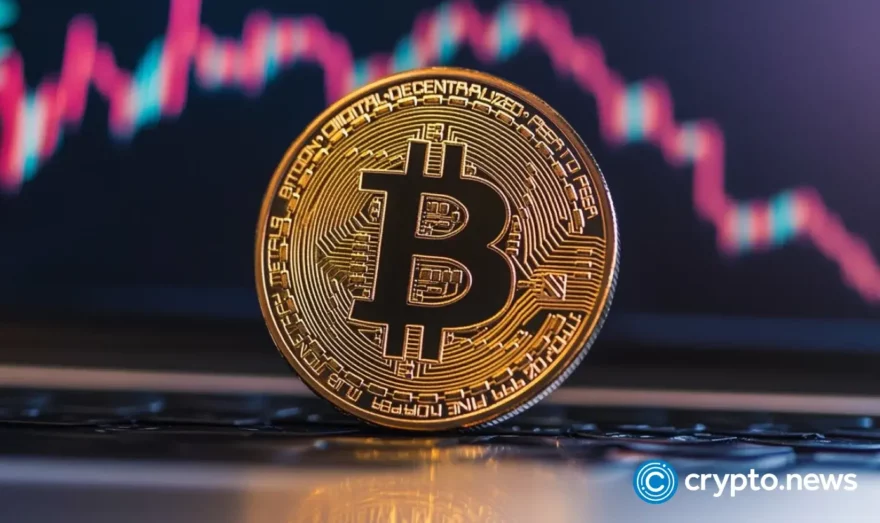Why Do Bitcoin Balances on Exchange Matter in the Crypto Markets?

Keeping an eye on exchange balances in crypto can be a great way to keep up with the latest trends in the crypto markets. Read on to learn about the role of tracking bitcoin exchange balances in the crypto markets.
Table of Contents
What Are Exchange Balances?
Crypto exchange balances are the total amount of a given cryptocurrency that is currently being held by an exchange.
They can be divided into two types: hot wallets and cold wallets.
Hot wallets are funds that are stored on an online wallet address, which means they can be accessed by anyone who has access to this address. Cold storage refers to any offline method in which digital funds are stored in a hardware device or a paper wallet. Cold wallets are not accessible via the internet or mobile device, except for when they are used to make transactions.
When looking at exchange balances in crypto, we mostly consider the collective amount of funds held by all exchanges in hot wallets. Exchanges usually keep their bitcoin holdings in several publicly known wallet addresses with large amounts on each address for convenience purposes (such as quick deposits and withdrawals). The size of these balances generally depends on how much crypto is being traded on the platforms per day on average.
High liquidity of crypto on exchanges normally indicates high market activity. In a liquid market, it is easier to trade cryptocurrencies because the volume of trading activity is so large that your order will almost always be filled without much price slippage.
On the other hand, when there is a low balance of crypto on exchanges, it typically means the market is less liquid. A less liquid market means that price volatility will be higher—making it riskier and more difficult for traders to buy and sell cryptocurrencies. Fewer buyers and sellers make for more volatile markets.
Exchange Inflows
Exchange inflows are deposits of funds into an exchange’s wallet address. Exchange inflows are an important variable when evaluating exchanges’ balances.
Whenever an investor moves crypto assets to a trading platform, they must have some specific intention in mind—otherwise, it would be pointless to spend money on the transfer and leave coins stored on a third-party platform.
A rise in exchange inflows can be a signal that investors are looking to cash out their crypto assets. Selling pressure pushes prices down, so when there is an increase in the inflow of funds into exchanges due to selling pressure, it can be seen as a bearish signal.
An increase in inflows could also reflect investors’ desire to trade on the derivative market—in other words, speculating on currency fluctuations. Increased trading volume due to this type of inflow can lead to greater market volatility.
Lastly, investors could move funds to crypto exchanges to stake their cryptocurrency or take advantage of perks such as airdrops. These actions are considered neutral, and it is difficult to quantify their effects on market prices.
Exchange Outflows
Exchange outflows are the funds leaving exchanges. Outflows often imply that investors are moving funds from exchanges to cold storage.
Outflows can signal that investors are no longer willing to sell their assets quickly and instead choose to store them securely. This indicates that market prices could rise.
Lastly, cryptos are subject to derivative markets, and investors who have profited may withdraw their assets to enjoy those profits or reduce risk. That would mean less liquidity on exchanges—and fewer trades.
Whale Watching: Who’s Moving Funds?
If you’re a crypto investor trying to understand exchange balances and their effects on the market, it pays to keep your eyes on who is moving the funds.
More specifically, we’re talking about whales—that is, large investors who own a substantial amount of crypto. Institutions and whales have a much greater effect on market sentiment than small retail investors because they command a huge share of the crypto market.
For example, if whales begin to sell their crypto holdings as prices rise, it may be a sign that the market has reached its peak and they are taking profits. Especially when smaller investors are buying in heavily.
Watching the movements of whale traders is a powerful tool for monitoring whether markets are going up or down—whales generally buy when a market has bottomed and sell when it peaks, setting the trend for retail investors.
To get started on whale watching, you can follow Twitter accounts like Whale Alert (@whale_alert), which tweet when large transactions take place across certain cryptocurrencies’ blockchains. Many traders use these accounts as news sources when making important decisions about where their funds go next.
Why Investors Should Keep an Eye on Exchange Balances
If you’re an investor, you should keep your eye on exchange balances. Exchange balances can act as proxies for market sentiment and price action, and they can provide insight into supply and demand in the crypto market.
For example, if an exchange’s publicly-available data shows that it has a large number of bitcoin for sale in its wallets, this could be taken as a sign that demand is low and prices may fall. If the same exchange has a low number of bitcoin in its hot wallets and a high number of BTC in investors’ cold wallets, this could indicate that investors are buying into bitcoin en masse. And they are moving their funds off exchanges to store their coins long-term.
If your investment strategy involves tracking exchange balances, make sure you take into account other factors like trade volumes and price movements before making any decisions based on these numbers alone.
The Takeaway
Exchange balances are indicators of what could happen to the crypto markets in the future. Since exchanges operate as gateways to the cryptocurrency market for traders and investors, understanding how these balances affect the market can be used for trading and help you improve your ROI.
FAQs
Where Can I Find a Chart for Bitcoin Balance on Exchanges?
Several platforms track the exchange balance of bitcoin and other cryptocurrencies. A good example is Glassnode.
What Percentage of Bitcoiin Is on Exchanges?
As of July 10, 2022, 2.275 million bitcoin were held in exchanges. This represents around 12% of all the bitcoin in existence.
What Exchange Holds the Most BTC?
Coinbase is the largest bitcoin holder among exchanges, followed by Huobi and Binance.
Why Does Keeping Bitcoin on an Exchange Drive the Price Down?
Whenever you buy bitcoin at a centralized exchange, there’s no guarantee that your account is credited with actual bitcoin. By holding your bitcoin at the exchange, you increase its liquidity—which allows the exchange to create more fractions of a coin backed by your deposit. This could lower the price of bitcoin.














